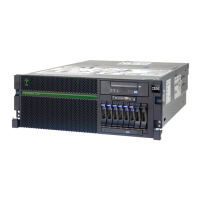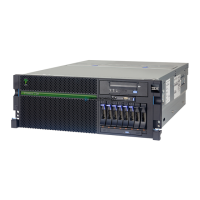Chapter 3. Virtualization 135
Virtual I/O Server functions
The Virtual I/O Server has several features, including monitoring solutions:
Support for Live Partition Mobility starting on POWER6 processor-based systems with the
PowerVM Enterprise Edition
For more information about Live Partition Mobility, see 3.4.5, “PowerVM Live Partition
Mobility” on page 136.
Support for virtual SCSI devices backed by a file, which are then accessed as standard
SCSI-compliant LUNs
Support for virtual Fibre Channel devices that are used with the NPIV feature
Virtual I/O Server Expansion Pack with additional security functions such as Kerberos
(Network Authentication Service for users and client and server applications), Simple
Network Management Protocol (SNMP) v3, and Lightweight Directory Access Protocol
(LDAP) client functionality
System Planning Tool (SPT) and Workload Estimator, which are designed to ease the
deployment of a virtualized infrastructure
For more information about the System Planning Tool, see 3.5, “System Planning Tool” on
page 146.
IBM Systems Director agent and several preinstalled IBM Tivoli® agents, such as the
following examples:
– Tivoli Identity Manager, to allow easy integration into an existing Tivoli Systems
Management infrastructure
– Tivoli Application Dependency Discovery Manager (ADDM), which creates and
automatically maintains application infrastructure maps including dependencies,
change-histories, and deep configuration values
vSCSI enterprise reliability, availability, serviceability (eRAS)
Additional CLI statistics in svmon, vmstat, fcstat, and topas
Monitoring solutions to help manage and monitor the Virtual I/O Server and shared
resources
Commands and views provide additional metrics for memory, paging, processes, Fibre
Channel HBA statistics, and virtualization.
For more information about the Virtual I/O Server and its implementation, see PowerVM
Virtualization on IBM System p: Introduction and Configuration Fourth Edition, SG24-7940.

